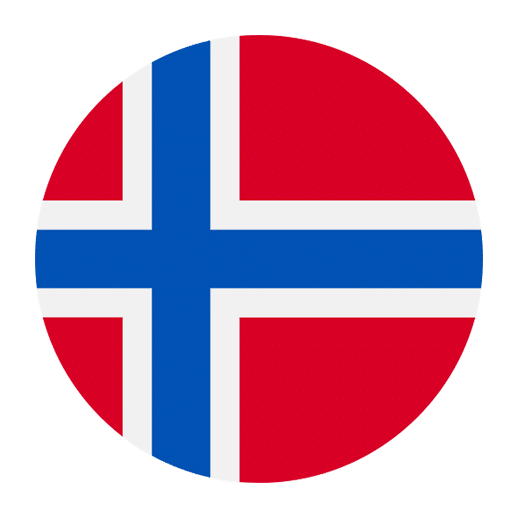Learning a new language often involves acquiring the vocabulary necessary to describe everyday items, and clothing and accessories are a significant part of that. When you’re learning Norwegian, understanding how to describe what you’re wearing or wish to purchase can be incredibly useful. This article will guide you through the essential vocabulary and phrases to describe clothing and accessories in Norwegian, helping you communicate more effectively in a variety of settings, from shopping to social interactions.
Basic Clothing Vocabulary
Let’s start with some basic clothing items. Here are some essential words you’ll need:
– **Kjole** – Dress
– **Skjorte** – Shirt
– **Bukser** – Pants
– **Skjørt** – Skirt
– **Jakke** – Jacket
– **Genser** – Sweater
– **T-skjorte** – T-shirt
– **Kåpe** – Coat
– **Buksedress** – Jumpsuit
– **Kjeledress** – Overalls
It’s important to note that Norwegian nouns have genders (masculine, feminine, and neuter). However, in this context, we’ll focus more on the vocabulary itself rather than the grammatical rules.
Footwear
Footwear is another crucial aspect of clothing. Here are some common types:
– **Sko** – Shoes
– **Støvler** – Boots
– **Sandaler** – Sandals
– **Joggesko** – Sneakers
– **Høyhælte sko** – High-heeled shoes
– **Tøfler** – Slippers
Knowing these words will help you describe what you’re wearing or looking for when shopping for shoes.
Accessories Vocabulary
Accessories can complement your outfit and are equally important to know how to describe. Here are some common accessory terms:
– **Veske** – Bag/Purse
– **Belte** – Belt
– **Hatt** – Hat
– **Skjerf** – Scarf
– **Hansker** – Gloves
– **Briller** – Glasses
– **Solbriller** – Sunglasses
– **Smykker** – Jewelry
– **Øredobber** – Earrings
– **Klokke** – Watch
These words can come in handy when you want to accessorize your outfit or describe someone else’s.
Describing Clothing and Accessories
Now that you’ve got the basic vocabulary down, let’s move on to describing these items. Descriptions often involve colors, sizes, patterns, and materials.
Colors
Here are some common colors in Norwegian:
– **Rød** – Red
– **Blå** – Blue
– **Grønn** – Green
– **Gul** – Yellow
– **Svart** – Black
– **Hvit** – White
– **Grå** – Gray
– **Brun** – Brown
– **Oransje** – Orange
– **Lilla** – Purple
– **Rosa** – Pink
For example, to describe a red dress, you would say “rød kjole.” If you’re talking about black shoes, you would say “svart sko.”
Sizes
Describing sizes is another important aspect. Here are some useful terms:
– **Liten** – Small
– **Medium** – Medium
– **Stor** – Large
– **Ekstra stor** – Extra large
– **Liten størrelse** – Small size
– **Størrelse** – Size
For instance, if you need a medium-sized shirt, you would say, “Jeg trenger en skjorte i størrelse medium.”
Patterns and Materials
Patterns and materials can add another layer of detail to your descriptions. Here are some patterns and materials:
– **Stripete** – Striped
– **Rutete** – Checkered
– **Blomstrete** – Floral
– **Prikkete** – Polka-dotted
– **Ull** – Wool
– **Bomull** – Cotton
– **Silke** – Silk
– **Lær** – Leather
– **Denim** – Denim
For example, a striped cotton shirt would be “en stripete bomullsskjorte.” A leather belt would be “et lærbelte.”
Useful Phrases for Shopping
When you’re out shopping for clothes or accessories, certain phrases can be incredibly useful. Here are some to get you started:
– **Hvor mye koster denne?** – How much does this cost?
– **Kan jeg prøve denne?** – Can I try this on?
– **Har dere denne i en annen størrelse/farge?** – Do you have this in another size/color?
– **Hvor er prøverommene?** – Where are the fitting rooms?
– **Jeg leter etter…** – I am looking for…
– **Kan jeg få kvitteringen?** – Can I have the receipt?
For example, if you’re looking for a blue jacket, you might say, “Jeg leter etter en blå jakke.”
Describing What You’re Wearing
Being able to describe what you’re wearing is another useful skill. Here are some phrases that might help:
– **Jeg har på meg…** – I am wearing…
– **I dag har jeg på meg en rød kjole.** – Today, I am wearing a red dress.
– **Han har på seg en svart jakke og blå jeans.** – He is wearing a black jacket and blue jeans.
– **Hun har på seg en hvit bluse og et svart skjørt.** – She is wearing a white blouse and a black skirt.
These phrases can help you describe your own outfit or someone else’s.
Talking About Preferences
Discussing your preferences when it comes to clothing and accessories can also be useful. Here are some phrases to help you express your likes and dislikes:
– **Jeg liker…** – I like…
– **Jeg liker ikke…** – I don’t like…
– **Jeg foretrekker…** – I prefer…
– **Jeg liker å ha på meg…** – I like to wear…
For example, if you prefer wearing casual clothes, you could say, “Jeg foretrekker å ha på meg avslappede klær.”
Common Questions and Answers
When discussing clothing and accessories, you might encounter some common questions and need to know how to answer them. Here are a few examples:
– **Hva har du på deg?** – What are you wearing?
– **Jeg har på meg en blå genser og svarte bukser.** – I am wearing a blue sweater and black pants.
– **Liker du denne jakken?** – Do you like this jacket?
– **Ja, jeg liker den.** – Yes, I like it.
– **Nei, jeg liker den ikke.** – No, I don’t like it.
– **Hvilken størrelse bruker du?** – What size do you wear?
– **Jeg bruker størrelse medium.** – I wear size medium.
These questions and answers can help you engage in conversations about clothing and accessories.
Seasonal Clothing
Understanding how to describe seasonal clothing is also beneficial. Different seasons require different types of clothing, and here’s how you can describe them in Norwegian:
– **Sommerklær** – Summer clothes
– **Vinterklær** – Winter clothes
– **Høstklær** – Autumn clothes
– **Vårklær** – Spring clothes
For example, to describe winter clothing, you might say:
– **På vinteren har jeg på meg en tykk jakke, hansker og en lue.** – In the winter, I wear a thick jacket, gloves, and a hat.
Conclusion
Describing clothing and accessories in Norwegian can greatly enhance your communication skills, whether you’re shopping, engaging in social interactions, or simply talking about fashion. By learning the basic vocabulary, understanding how to describe colors, sizes, patterns, and materials, and mastering some useful phrases, you can confidently talk about what you’re wearing and what you need.
Practice these words and phrases regularly, and try to incorporate them into your daily conversations. Not only will this improve your Norwegian language skills, but it will also make your interactions smoother and more enjoyable. Happy learning!

